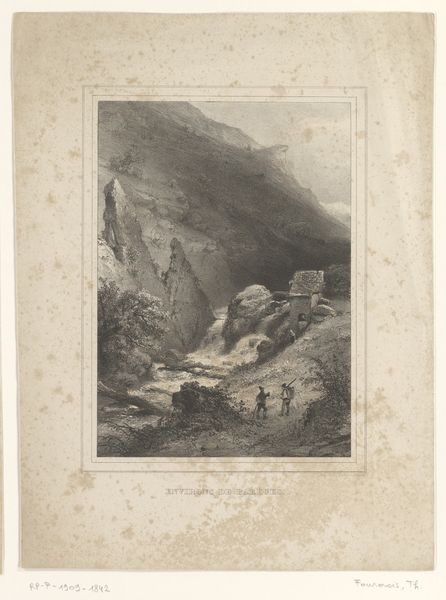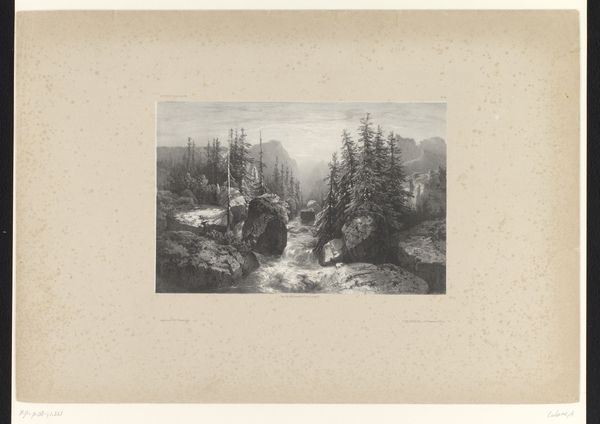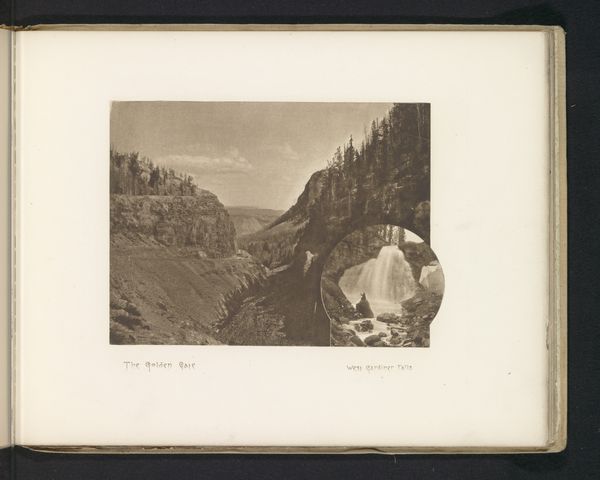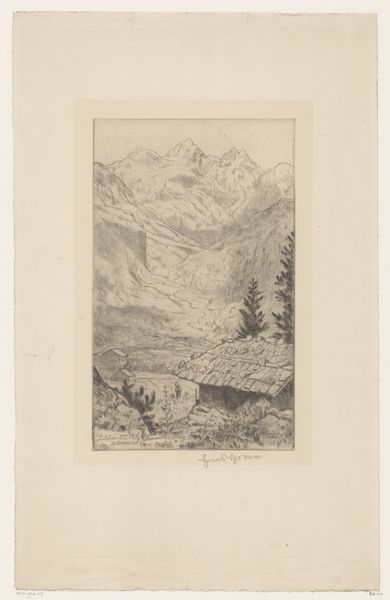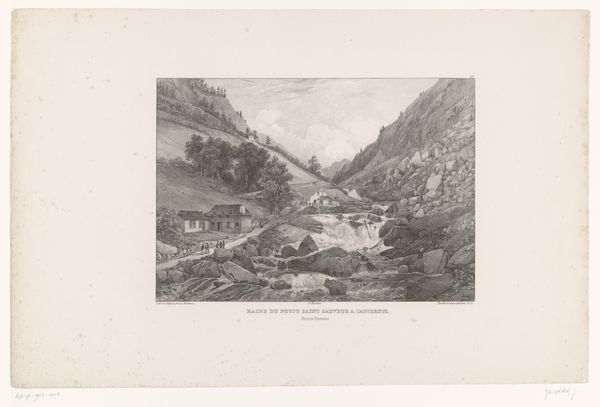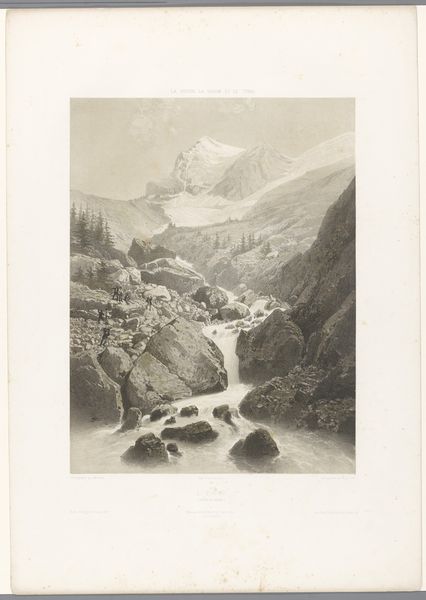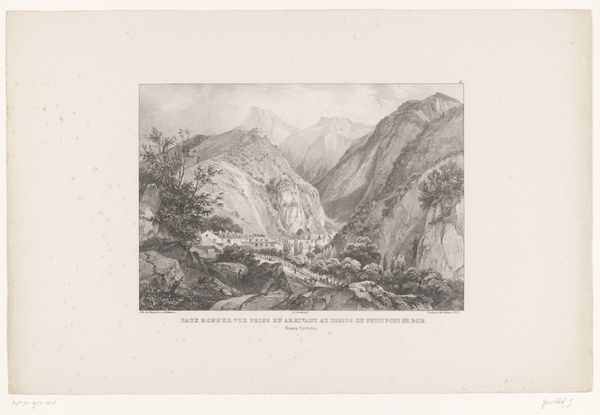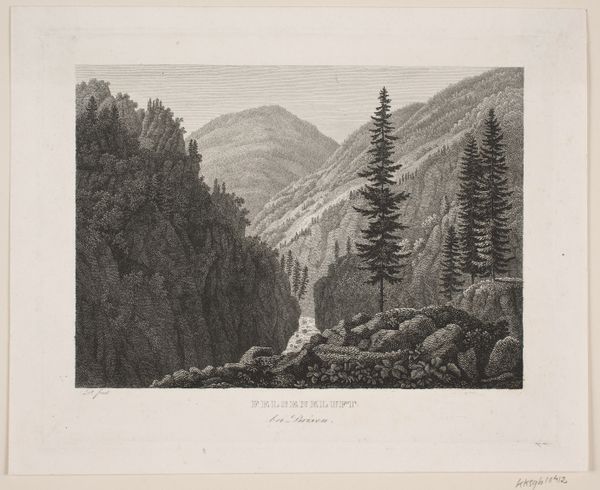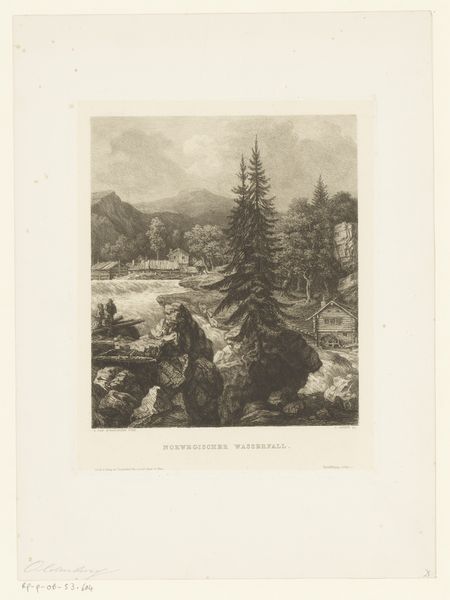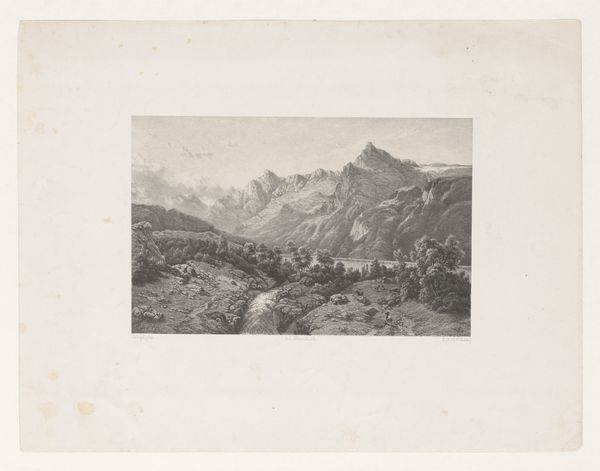
print, etching
# print
#
etching
#
landscape
#
romanticism
#
line
#
realism
Dimensions: height 307 mm, width 444 mm
Copyright: Rijks Museum: Open Domain
Curator: This is "Zicht op de Rosenlauigletsjer," or "View of the Rosenlaui Glacier," created sometime between 1836 and 1840 by Louis-Julien Jacottet. The work on display here at the Rijksmuseum is an etching, a kind of print. Editor: It’s captivating. I’m struck immediately by the overwhelming feeling of insignificance – figures are dwarfed by this monumental landscape, swallowed by nature’s grandeur. There's also something incredibly somber and imposing about the glaciers, an understanding of nature’s indifference to the human experience. Curator: Indeed. That sublime quality was certainly a key element sought out by Romantic artists of the period. There’s a very conscious effort here to depict nature as all-powerful, exceeding human comprehension and control. Looking at the figures themselves, though, they seem almost oblivious to the raw power surrounding them; an almost satirical, albeit subtle, reflection on human hubris, perhaps? Editor: Possibly. Or perhaps that speaks to their experience as onlookers, as travelers positioned to *view* rather than to participate in that sublimity. Do we consider this through the lens of colonialism – nature as resource, nature as spectacle for those privileged enough to witness its ‘untamed’ beauty? I wonder, too, what voices are missing from this narrative? Whose land is this, and who benefits from its artistic representation? Curator: A potent question, especially as we recognize the growing accessibility to travel among certain European classes during this time. It would be naive to ignore the broader socio-political context that enabled and even encouraged this form of landscape tourism, including that it contributed to Switzerland's burgeoning national identity. Editor: The piece also demonstrates realism in how glaciers can influence politics and history. By visually diminishing people within a glacial frame, it makes you contemplate who had, and has, power, influence, and permission to exist in its setting, during the height of European Romanticism. Curator: And isn’t it interesting how an image originally designed to inspire awe can become a point of reflection on our place in a complex and often inequitable world? Thank you for that provocation. Editor: It’s essential we don't see historical artwork with closed minds, especially with images of “untouched” or "beautiful" land that still reflect legacies of domination and exclusion today.
Comments
No comments
Be the first to comment and join the conversation on the ultimate creative platform.
